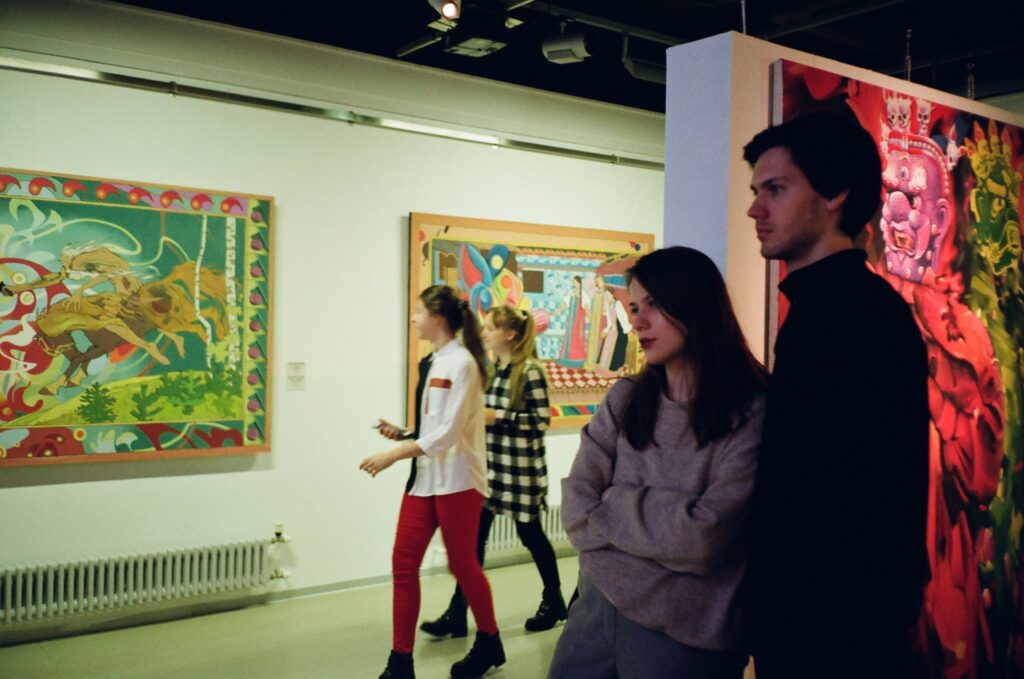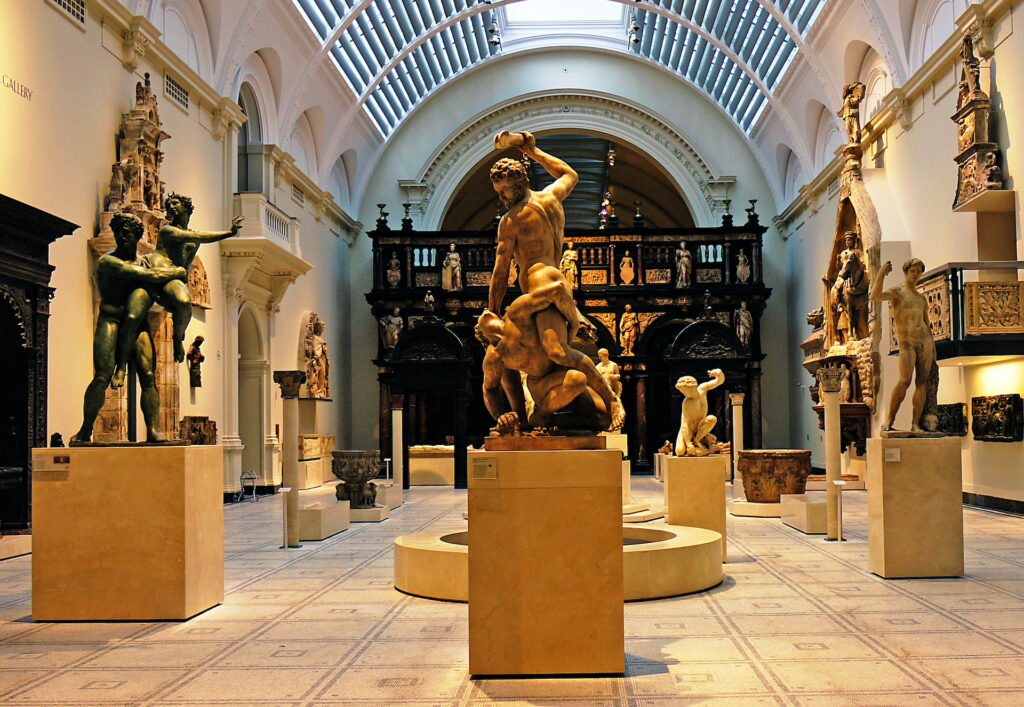


Are you an artist? Do you want to sell art to grow your art business? Are you an artist looking to make some extra money? Or maybe you’re hoping to turn your art into a full-fledged business? Either way, you’ll need to know how to sell art and make money in these last few months of the year 2022.
If you’re an artist looking to sell your work and make some money, this guide is for you. In it, we’ll discuss the various ways to sell art, as well as tips on how to increase your chances of success. So whether you’re a painter, sculptor or ceramist, read on for information that can help you succeed in the art world.
So before selling you must be aware of different ways of selling art. So let’s start with that.
Sell Art Online & Make Money As an Artist in 2023 |
There are loads of different ways to sell your art. But the most important part is finding what works for you and what gets your art in front of the eyes of buyers. You need to be efficient with your time so that you can continue to create new pieces to sell.
So, here are four popular ways to sell art.
1. Social media
This is a great way to get started because it’s free and easy to use platforms like Instagram, Facebook, Pinterest, and Twitter to reach a wide audience. Hashtags are key on social media- make sure you are using them! Posting regularly, using Boomerangs and Stories, as well as interacting with others in your field will help you gain followers organically. When you have a strong and loyal following, you can start selling your artwork through your profile or shop.
2. Etsy
Etsy is an e-commerce platform specifically for selling handmade or vintage items, including artwork! Etsy allows you to set up a shop for free and then takes a small percentage of each sale as a commission. You’ll need high-quality images of your paintings or sculptures as well as descriptions and multiple pictures for each item for potential buyers who want more details.
3. Group Exhibitions / Call for Artists
Research local galleries or search online databases such as the call for entry where you can find information about submission requirements and deadlines for open calls or juried exhibitions. Applying to these opportunities will give you great exposure while also building up your resume- both things that collectors look at when considering whether or not to purchase work from an artist.
If you want to apply to call for art click on the link below to find details about it.

4. Art Fairs
Participating in art fairs is another great opportunity for exposure and sales but they require more preparation than the other methods listed here. Not only do you need high-quality images and descriptions of your work but you’ll also need a display setup (if applicable) and marketing materials such as business cards and postcards with information about where buyers can find more of your work online. Unless you have done something like this before, it might be a good idea to participate in a group booth with other artists before tackling an art fair on your own- that way you can share costs and learn from others’ experiences.
So before selling try out a few different methods and see what works best for you and your artistic practice! Building up a consistent body of work is key- the more art potential buyers see from you, the more likely they are to purchase one (or more!) of your pieces. Keep at it and promoting your work will become second nature in no time!
For selling art and making money from it, it is very important to learn about pricing your art
Pricing your art
Pricing your art can be a tricky business. On the one hand, you want to charge enough to make a profit and support yourself as an artist. On the other hand, you don’t want to price your art so high that nobody will buy it. So, how do you find that happy medium? In this blog post, we’ll explore a few different pricing strategies for artists of all types.
Cost-plus pricing.
This is probably the simplest pricing strategy out there. Simply add up all the costs associated with making your art (materials, overhead, shipping, etc.), then add a percentage on top of that to account for profit. For example, let’s say it costs you $100 to make a painting including materials, shipping, and framing. You could add 20% on top of that for a total price of $120.
Value-based pricing.
With this pricing strategy, you base your prices on the perceived value of your art rather than the cost of materials + overhead + profit margin. This means taking into account factors like your experience level, the time it took to make the piece, the size of the work, etc.
For example, let’s say you’re a new artist and it took you 10 hours to complete a painting that’s 2 feet by 2 feet in size. You might charge $100 for that painting since it took you 10 hours to complete and is a decent-sized canvas. But if you’re a more experienced artist who can complete a painting in 2 hours, you might charge $500 for the same size painting since it only took half the time to complete.
It’s also worth considering whether your artwork is ready to hang or not when using value-based pricing; artwork that’s ready to Hang will usually command a higher price than artwork that requires additional framing or matting before it can be hung on a wall.
Comparative pricing
With comparative pricing, also known as anchor pricing, you compare your prices against similar pieces by other artists. This gives potential buyers something to reference when considering whether or not to purchase your artwork.
For example, let’s say you paint landscapes and you want to price a 16″x20″ oil painting at $400. You could compare that price point against similar-sized paintings by other landscape artists in order to come up with a fair price for your own piece. If most comparable paintings are priced at $350-$450, then $400 is likely a fair price for yours. But if comparable paintings are priced at $250-$300, then you might want to consider lowering your price point in order to stay competitive. Comparative pricing can be especially helpful when dealing with art collectors who are already familiar with what similar pieces are selling for.
Always remember, there’s no one perfect way to price your art; what works for one artist might not work for another. The best way to determine how much to charge for your pieces is by experimenting with different strategies until you find what works best for you and your business.. And remember, as long as you’re making a profit and supporting yourself as an artist. You’re doing it right!
For selling art it is very important to learn how you will market your art.
Marketing art
Marketing your art can feel daunting and like you need a degree in digital marketing to even understand where to start. The web is ever-changing, which means the landscape of marketing is, too. As an artist, it is essential to be aware of these changes and how they can impact your career. Keep reading to learn about marketing your art online.
Blogging
A blog is a great way to connect with other artists and art enthusiasts from around the world. By writing about your journey as an artist, you can attract attention to your work and build a following.
Social Media
Social media platforms like Twitter, Facebook, Pinterest and Instagram are great ways to connect with potential customers and promote your art. By posting interesting and engaging content, you can attract followers who may be interested in purchasing your work. In addition to promoting your own content, you should also share other people’s content that is relevant to your audience. For example, if you are a painter who specializes in landscape paintings, you could share articles about different outdoor activities or locales that would be of interest to your followers.
Email Marketing
Email marketing involves sending promotional messages through email to people who have signed up to receive them. This is an incredibly effective way to reach potential customers who have already shown an interest in what you do. To get started with email marketing, all you need is an email list and a newsletter service like Mailchimp, Flodesk, or Constant Contact. Then, you can start crafting attractive emails that will drive traffic back to your website or online store.
https://artstoheartsproject.com/flodesk-vs-mailchimp-which-is-the-best-email-marketing-platform-for-artists-to-choose-in-2022/
Marketing your art doesn’t have to be complicated or expensive – there are plenty of free or low-cost ways to promote yourself online. And if you want to learn about how to market your art like a pro, We have exciting news for you. Soon we are launching our “Artist Marketing Formula” course. THIS 4-WEEK PROGRAM IS FOR YOU, IT WILL TEACH YOU EVERYTHING YOU NEED TO KNOW ABOUT MARKETING AND PROMOTING YOUR ARTWORK.

You’ll learn where to sell, how to sell, and how to make money consistently as an artist. Plus, you’ll get practical skills and powerful mindset shifts that successful international artists use to build their businesses without feeling overwhelmed or confused about their next steps.
So this is all from my side and I hope this will help you in selling you more efficiently. If you need further assistance you can always reach out to us. We will be more than happy to help you out. Our email is info@artstoheartsproject.com. So I will see you with another article till then have a happy week ahead and keep creating the magic that you do.

















Comments 19